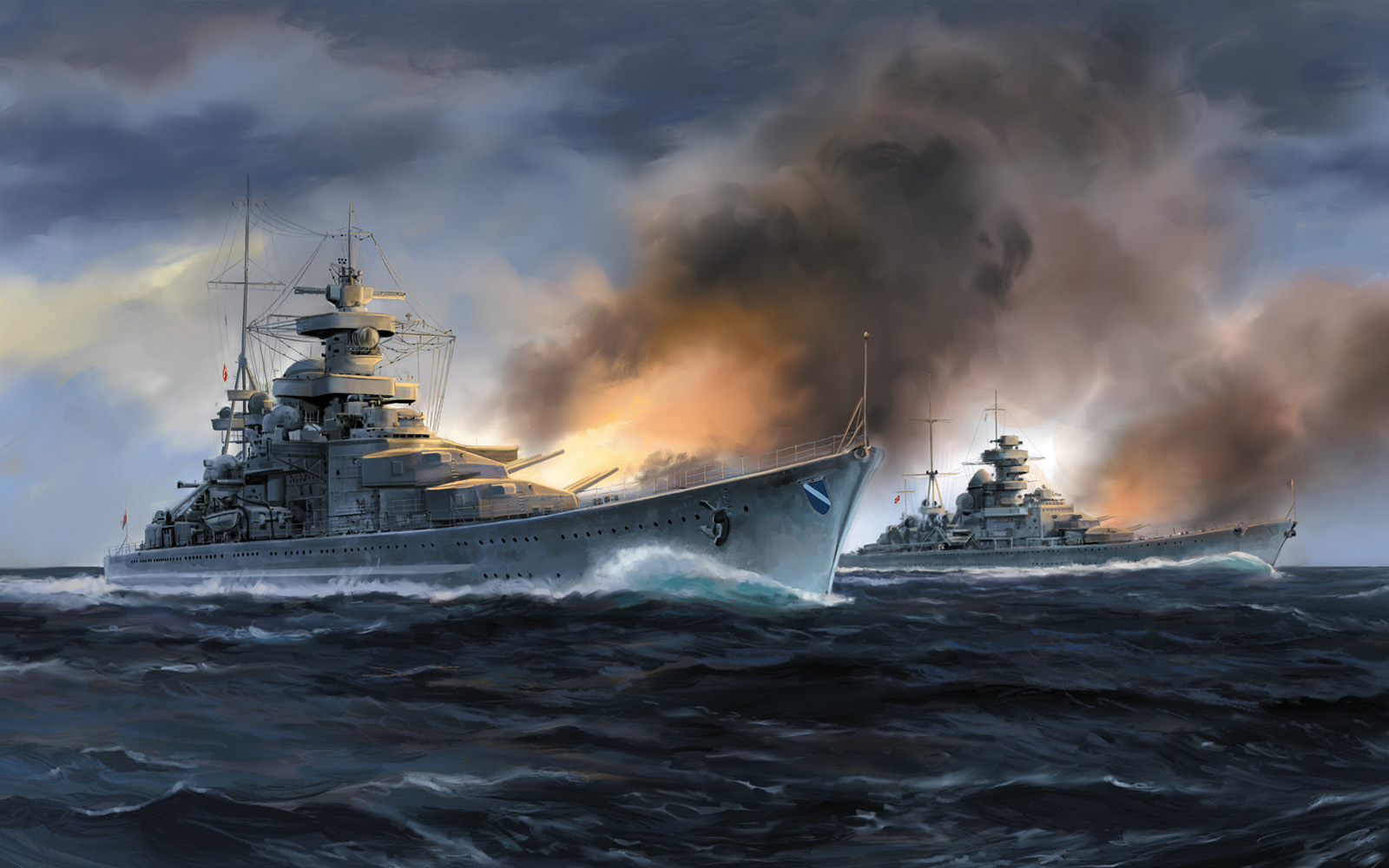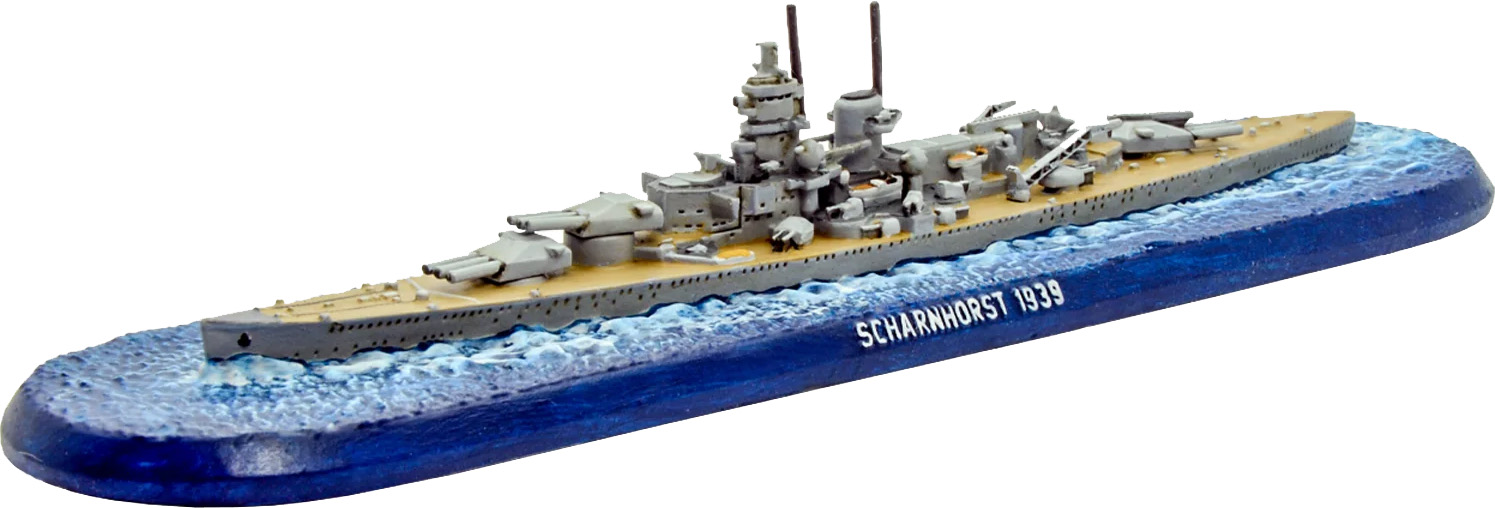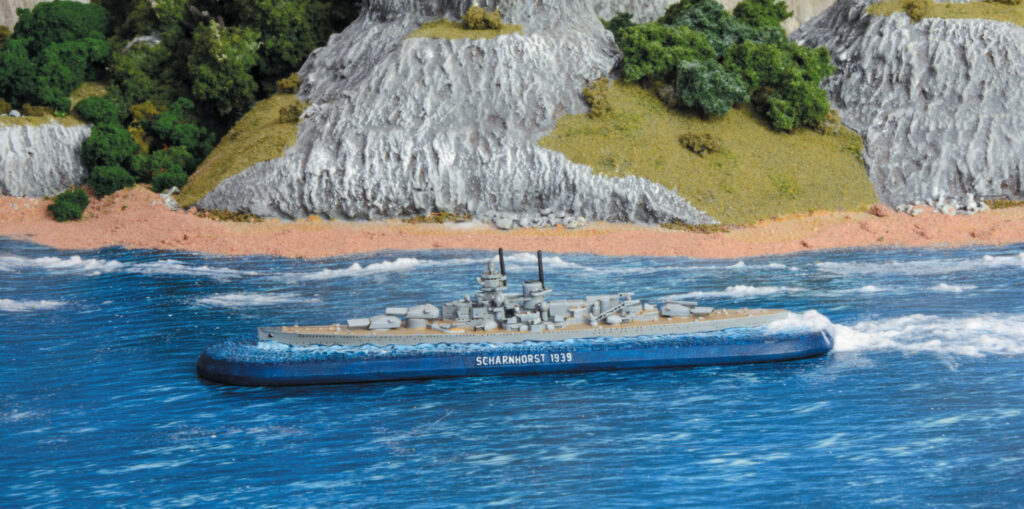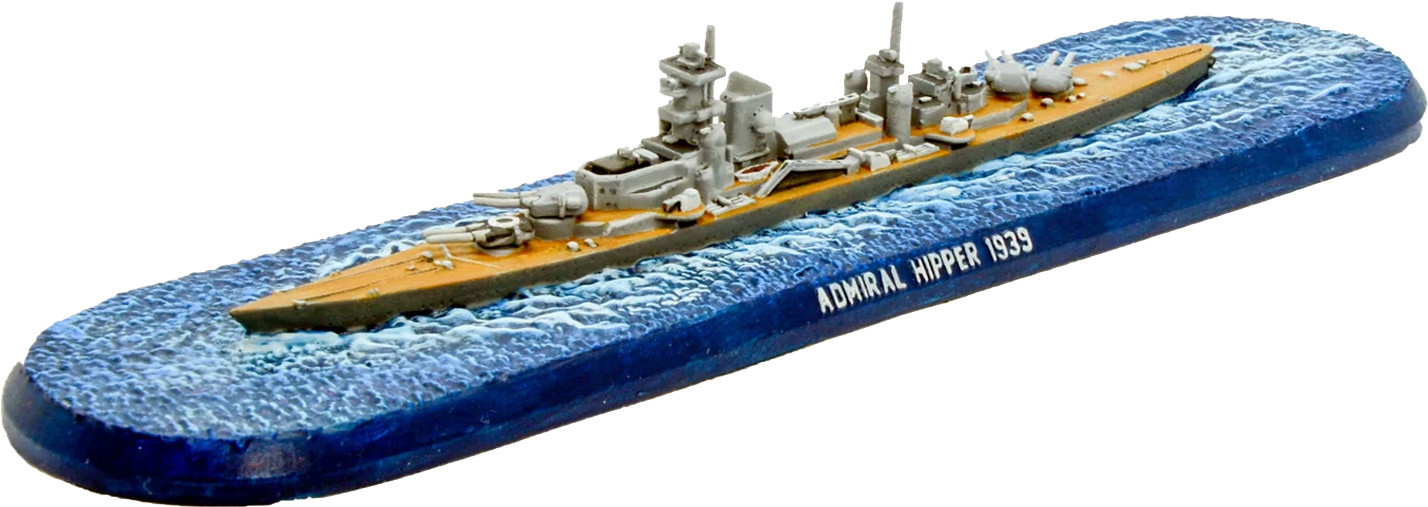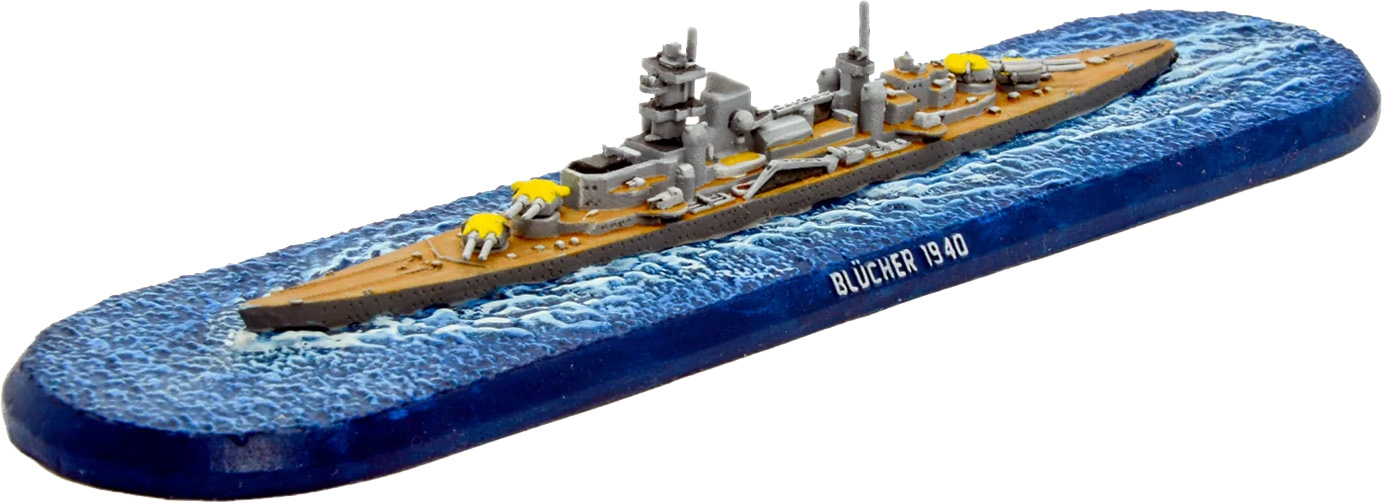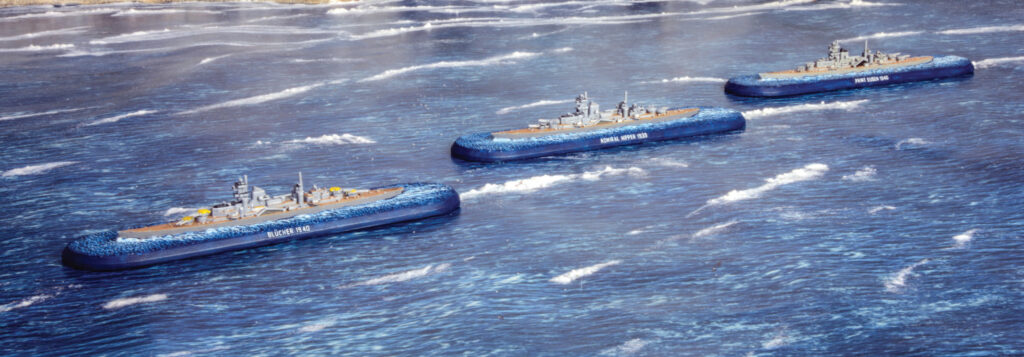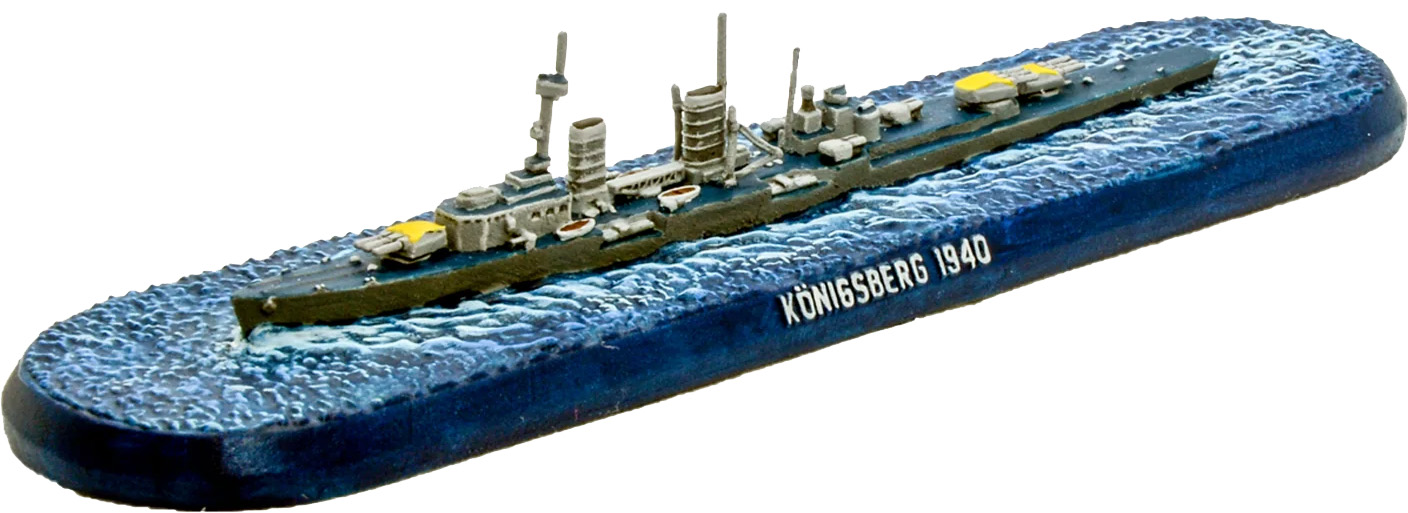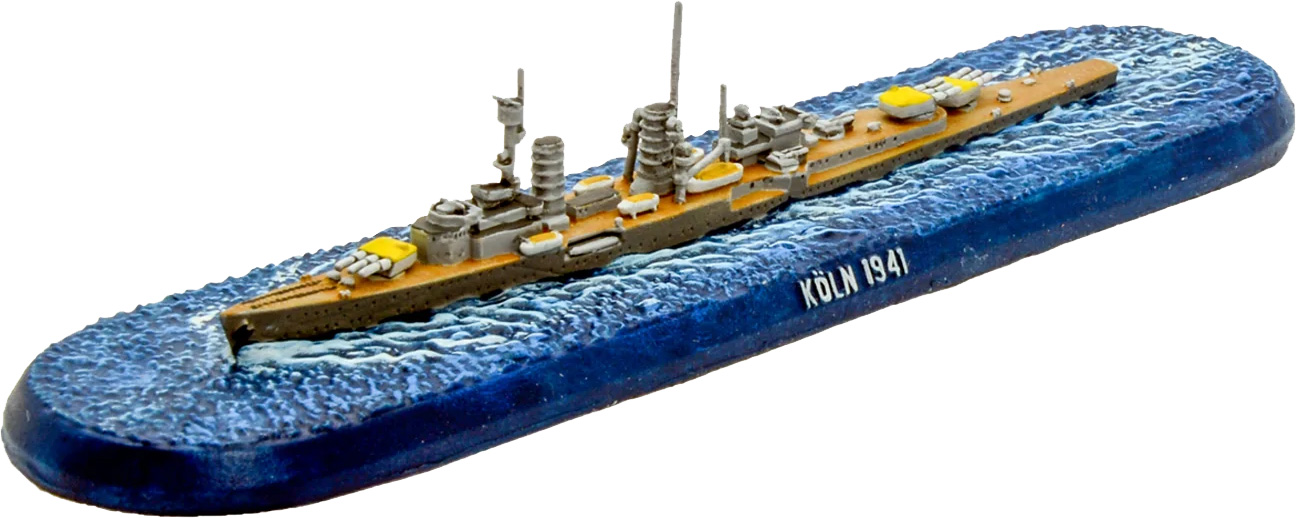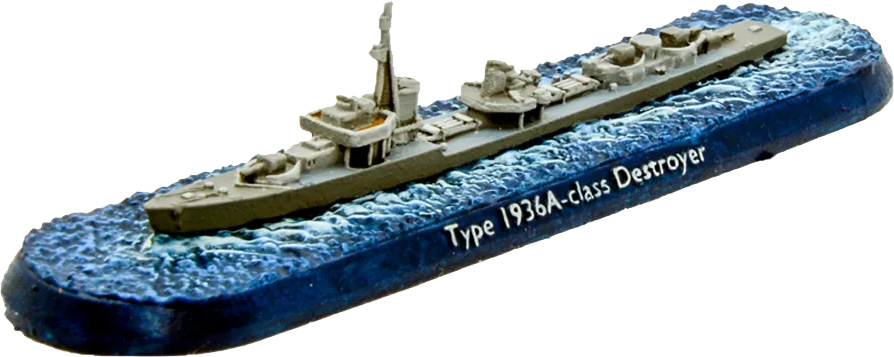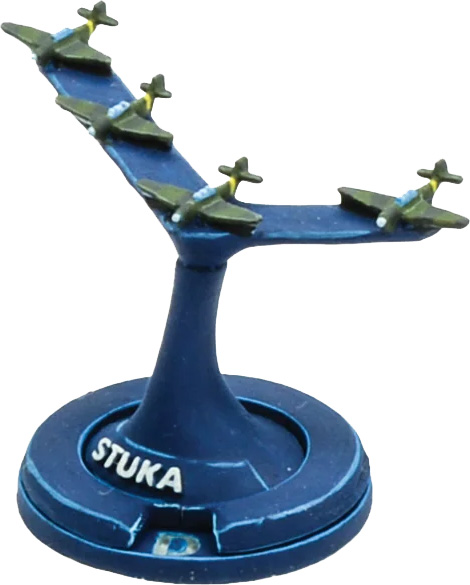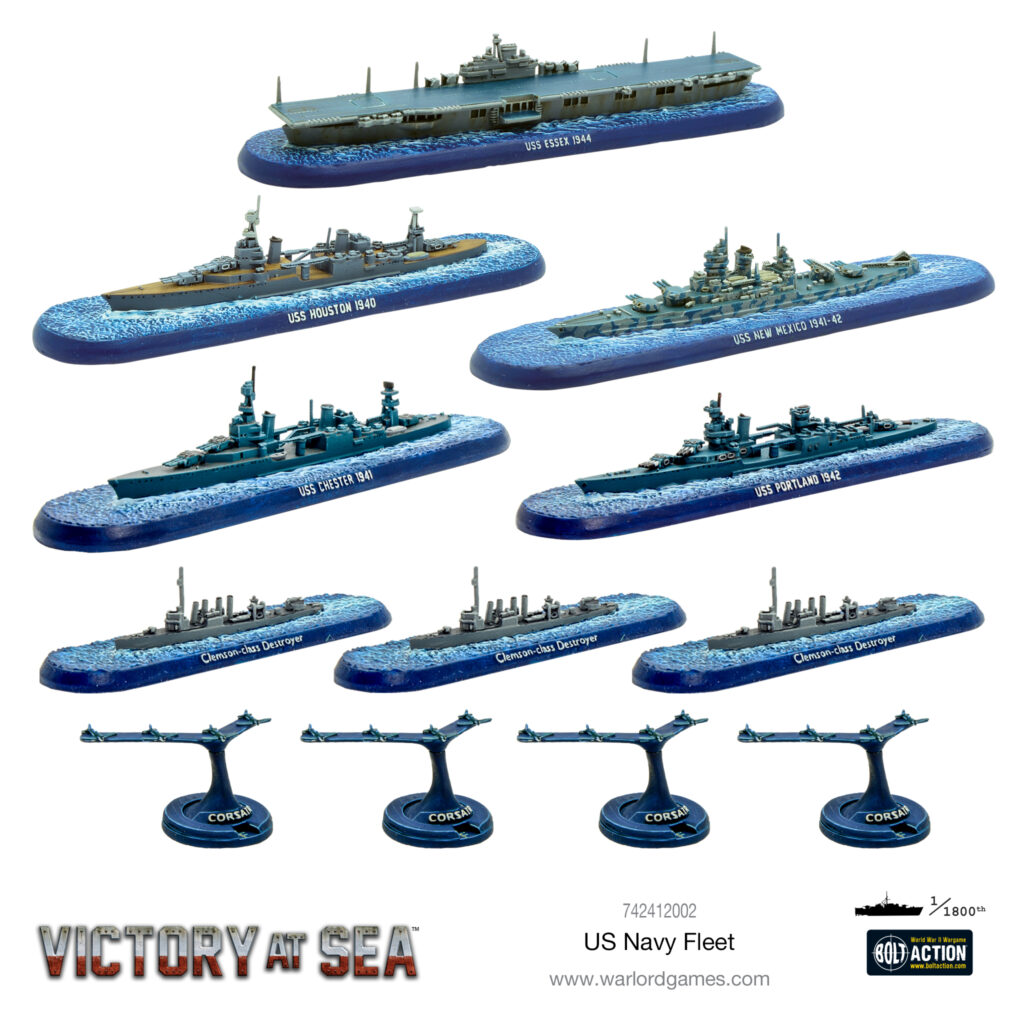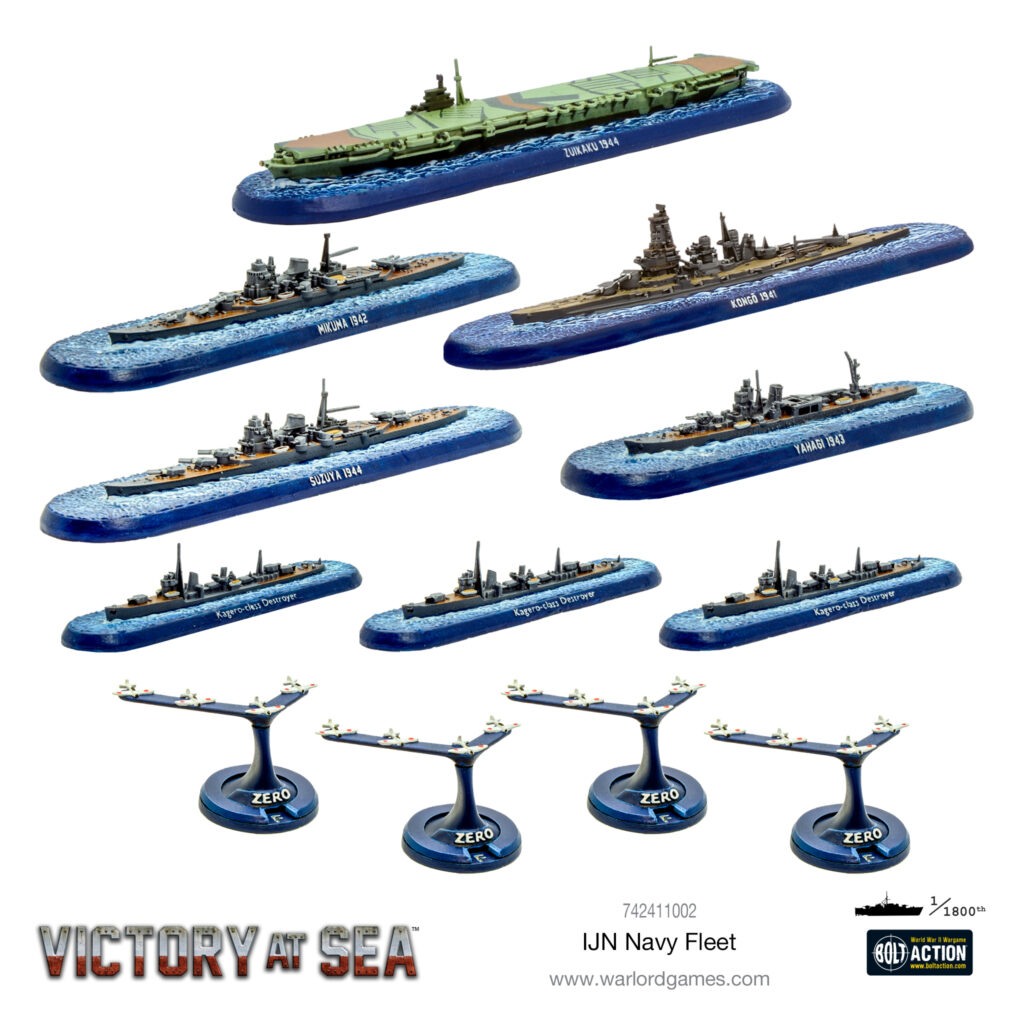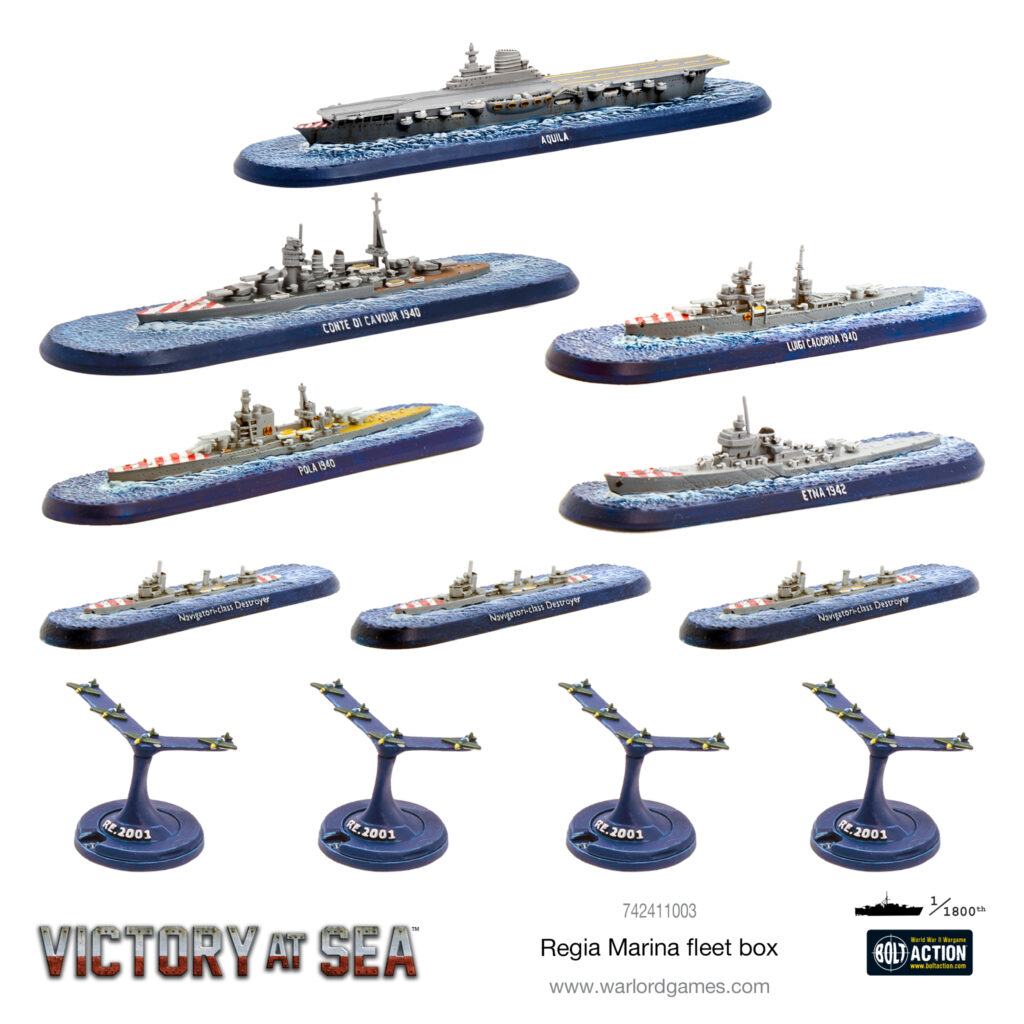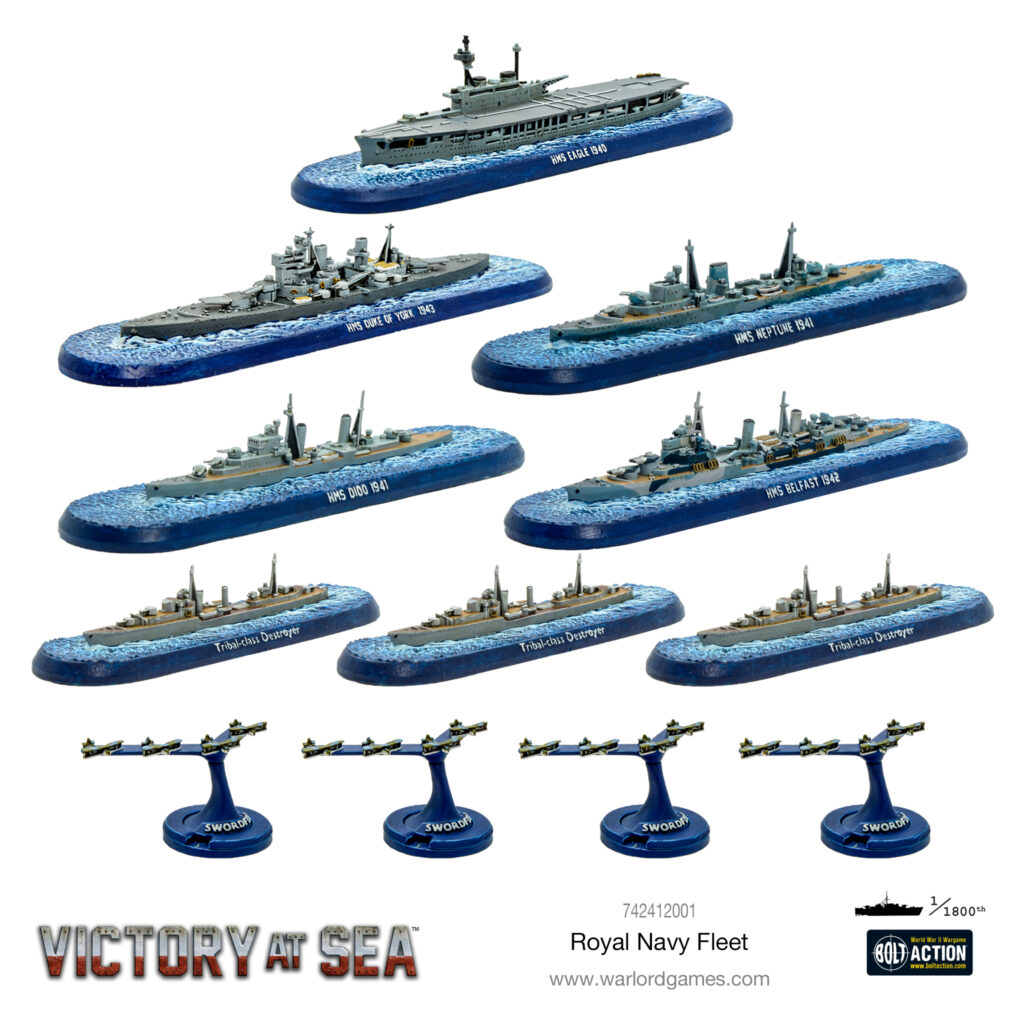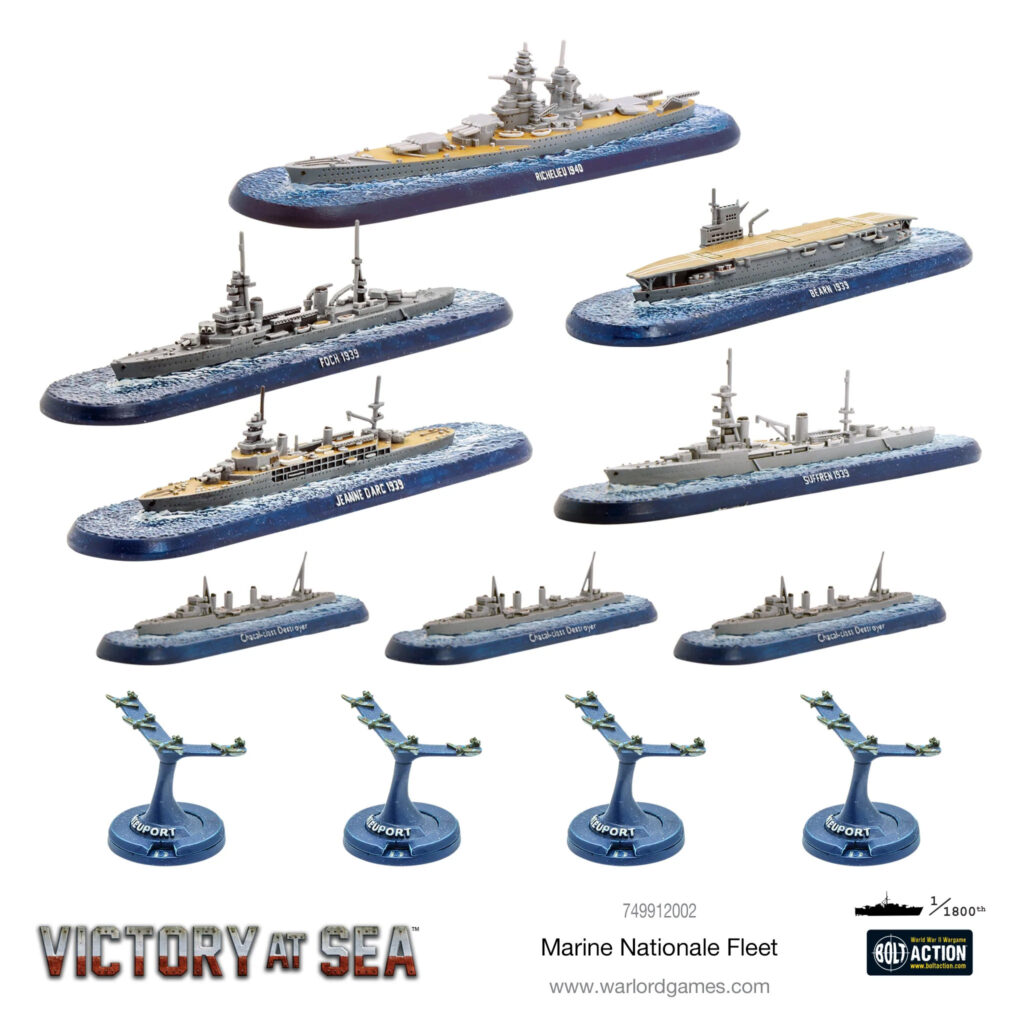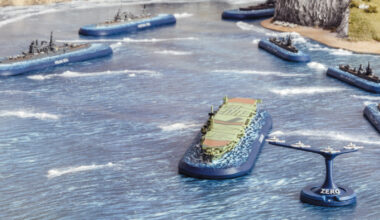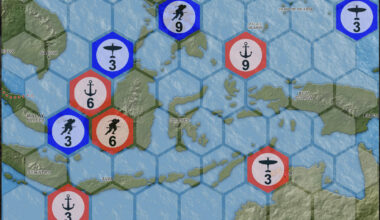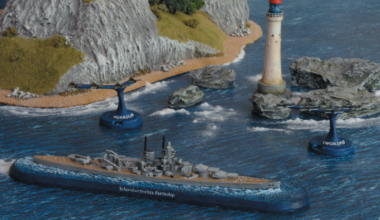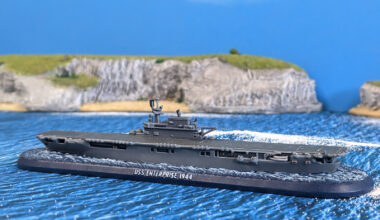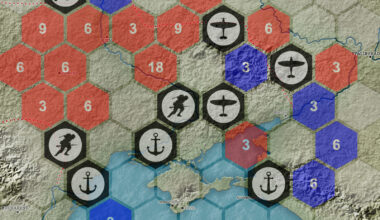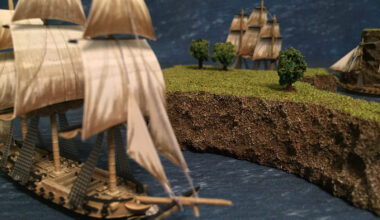Much has been made of the infamous U-Boot-Waffen, the submarine service of the German Kriegsmarine, and their devastating impact on Allied shipping. Aside from a few particularly notable engagements, rather less is made of their colleagues on the surface, and in many ways, they can be considered the forgotten arm of Germany’s war effort. This is a shame, particularly from a wargaming perspective, as although the successes of the Kriegsmarine were limited in real life, there is enormous potential on the tabletop to both re-write history and engage in some fantastic ‘What if…?’ gaming. The perfect way to get straight into the Victory at Sea action is the Starter Fleet – let’s delve in!
The Kriegsmarine was historically a rather unusual navy, having been forced to rapidly recover from its all-but-total destruction after the First World War and the subsequent treaty restrictions and economic pressures facing Germany in the inter-war period. This, coupled with the Nazi propensity for the megalomaniacal, as well as the initial successes of U-Boats, meant that German naval development went down some weird and wonderful paths, many of which would lead to expensive dead ends. Others, however, resulted in some very capable ships indeed, several of which are included in the Starter Fleet!
The Battleship
German capital ships of World War Two, while not even close to being as numerous as their British opponents, presented a serious threat to the Allied supply convoys, and as such were treated as targets of the utmost importance. Enormous resources were dedicated to hunting down the big ships when they sortied (or, in the case of Tirpitz, when she didn’t!), and while this largely neutralised their impact to an extent, when they broke out into the Atlantic they proved absolutely devastating – see the Battle of the Denmark Strait for an example!
Appropriately, the Starter Fleet is headed up by the Scharnhorst, lead ship of the eponymous class. Fast and well-armoured with a Flank Speed and Armour of 6 each, and well-protected by an Armoured Deck and Torpedo Belt 3, she’s a great choice to spearhead your attack. Her nine 11.5” guns are great for long-range shooting, and a canny admiral will keep her out of the way of enemy fire and engage at distance, making best use of Plunging Fire. While she ‘only’ has a Hull value of 78, meaning that she doesn’t ideally want to go toe-to-toe at close range with something like a Royal Navy King George V-class, Scharnhorst is plenty tough enough to be the mainstay of your battleline.
A couple of interesting refits are available too, one giving her a torpedo battery that makes her a genuine danger close in, while there’s also the dramatic (and never performed) 1944 refit, which increases her Hull to 84, and replaces her 11.5” guns with six 15” versions – a serious upgrade to the main battery! This is one of those examples of German ‘What ifs…?’ that are great for wargaming. Historically, Scharnhorst would be sunk in 1943 at the Battle of the North Cape, but it’s interesting to consider what she might have become! A little conversion work is needed to take the triple turrets down to doubles (brass rod is your friend here), but it would give a fantastic and unique centrepiece for a hypothetical later-war German fleet!
The Cruisers
Backing up Scharnhorst are the trio of Admiral Hipper-class heavy cruisers that saw service in World War II. Consisting of Admiral Hipper, Blücher, and Prinz Eugen, these powerful vessels are the perfect complement to your battleship. Able to keep up with their Flank Speed of 6, and capable of dishing out some serious firepower courtesy of their eight 8” guns and torpedo battery, they are more than able to stand up against enemy heavy cruisers one-on-one, or gang up on larger vessels – be careful, though, as their 3+ Armour and 36 Hull can only take so much punishment. A smart commander will act aggressively with them when their opponent is weak (isolated cruisers make a great target) but keep them out of harm’s way when bigger units show up – think of them like playground bullies! Historically, Admiral Hipper-class cruisers were something of a mixed bag in service, Blücher being sunk by Norwegian shore batteries in 1940, while Admiral Hipper, following a successful career, would be decommissioned for repairs in 1943, but would never return to full service and would be scuttled at her moorings in 1945. Prinz Eugen would be the only one of the class to remain in commission throughout the war, eventually being taken by the Americans as a post-war prize. Renamed USS Prinz Eugen, she would be expended in 1946 as a target during the Operation Crossroads nuclear tests.
Rounding out the cruiser force are the lighter sisters, Königsberg and Köln. Packing a reasonable punch with their torpedoes, these Agile craft aren’t what you’d call durable, with only 15 Hull and 2+ Armour, but provide useful support for both the Admiral Hipper-class cruisers and the destroyers (more on them in a second!), as well as providing some anti-submarine capability with the Sub Hunter rule. Best used in a supporting role (to avoid their historical fates – beware the Norwegian coast!), they can actually be very dangerous to larger vessels – if used correctly. A foolish opponent will write them off as too small to pose a threat to their larger assets, and focus on your heavier units. At this stage, the Königsbergs are perfectly placed to slash in and deliver their torpedoes at close range – a good salvo and some decent Critical rolling can absolutely devastate even the largest vessel. Of course, if your opponent does manage to catch them one-on-one with a heavier vessel, they won’t stand up to many hits at all, so it’s all about risk management.
The Destroyers
The last element of your surface fleet is the destroyer force, and the Starter Fleet includes a trio of Type 1936A-class Destroyers. Large, powerful, and reliable vessels, they form a great screen for your heavier assets, and with no aircraft carriers to babysit, they can really go on the attack with the rest of the fleet! Like all destroyers, they’re significantly vulnerable to just about all incoming fire, but have a good Flank Speed of 7, as well as Sub Hunter, meaning they can race ahead of the fleet, or act as a rapid reaction force to enemy concentrations. They’re also the perfect accompaniment for the Königsberg-class cruisers, providing strength in numbers as well as the threat of a torpedo barrage (always a concern in Victory at Sea). They won’t set the world on fire by themselves, but are a vital component of your fleet – you can never have too many destroyers!
The Aircraft
While the Kriegsmarine never (historically) operated an aircraft carrier, many of their operations took place within range of land-based Luftwaffe airfields. As such, the Starter Fleet includes four flights of Ju 87 dive bombers – the infamous Stukas – to drop high-explosive nastiness on your opponents! While their Dogfight score is appropriately a bit underwhelming, if you can get their bombs on target they have the Devastating special rule and can really spoil a battleship’s day. Best of all, at only 15 points per flight, they’re nice and cheap!
Next Steps
Once you’ve got your Starter Fleet assembled and painted (or at least halfway painted. Okay, maybe a third painted. Don’t worry – we won’t tell anyone!), and got some early games in, you’ll hopefully have a decent idea how the Kriegsmarine play in Victory at Sea, and more importantly what you like about them and want to have more of! You can go big with Bismarck or Tirpitz and challenge the Royal Navy’s vaunted battleline, or build up your cruiser and destroyer force. No self-respecting admiral should be without U-Boats, and of course the Luftwaffe are always willing to lend more aircraft to the fray. You can even get weird and wonderful – while the aircraft carrier Graf Zeppelin was never completed historically, she’s available for the ‘What if…?’ fight that Victory at Sea is perfect for, allowing you to match the Allies at their own game. With all this and more at your disposal, there’s only one question – which way will you develop your fleet?
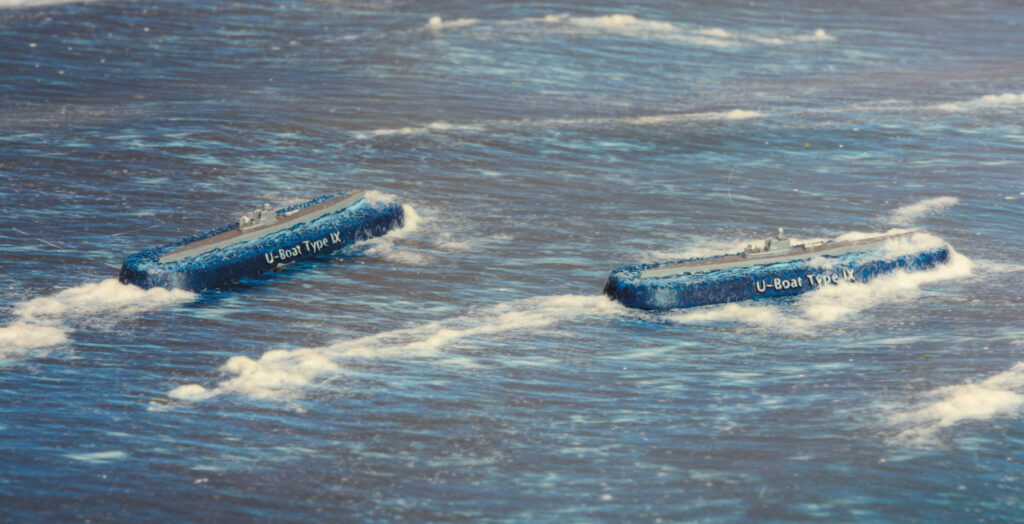
It has been said that Hitler never really understood naval warfare, and suffered from the internal politics of Nazi leadership leading to a lack of funding and materials. Such squabbles and difficulties do not plague us in Victory at Sea, allowing us to gather and unleash the full potential of the Kriegsmarine on the tabletop. The Starter Fleet is by far the easiest way to gather a well-rounded collection of vessels from which you can expand!
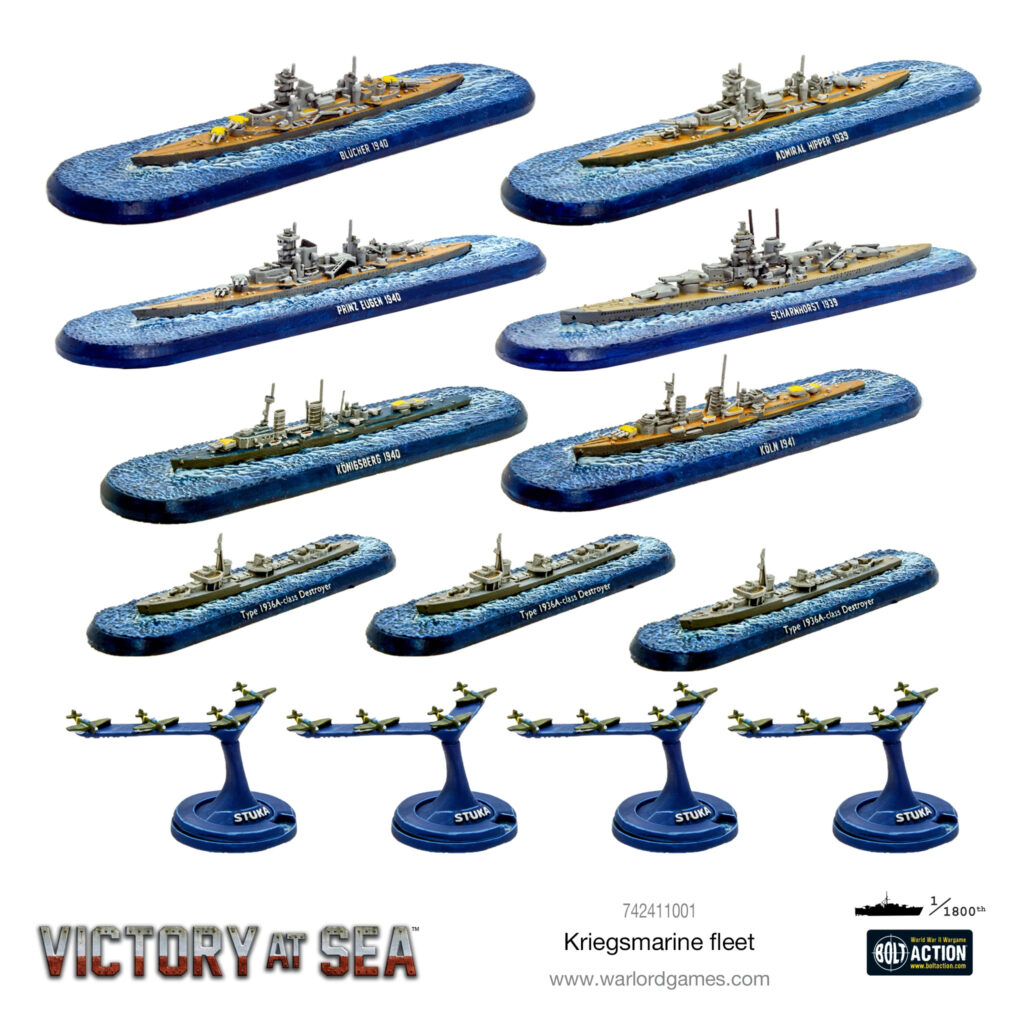
Other Navies in Victory at Sea
The Royal Navy, Regia Marina, US Navy, Imperial Japanese Navy & Marine Nationale starter fleets will similarly arm you with a great variety of vessels that all make for a solid base on which to build a Victory at Sea collection!
